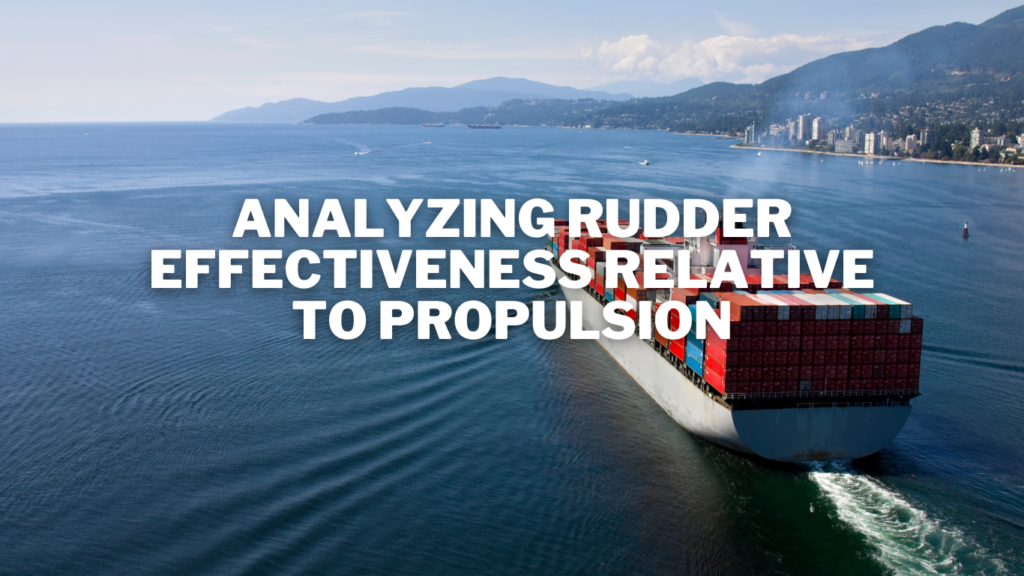Analyzing Rudder Effectiveness Relative to Propulsion

Understanding the interaction between rudders and propulsion systems is crucial for enhancing the maneuverability and safety of marine vessels. The rudder, a primary steering device, works intimately with the propulsion mechanism to direct and control a ship’s path. However, the effectiveness of a rudder can vary greatly depending on the type of propulsion used and the specific design of the rudder itself. This article delves into how different propulsion systems affect rudder performance and the impact of various rudder designs on a vessel’s ability to maneuver effectively.
Assessing Rudder Performance in Various Propulsion Systems
The functionality of a rudder is profoundly influenced by the propulsion system of a vessel. In conventional single-screw propulsion systems, the rudder is placed directly behind the propeller, where it can utilize the water flow generated by the propeller to achieve maximum steering force. This setup helps in creating a stronger "propeller-rudder interaction," which is pivotal for the rudder’s responsiveness and effectiveness. On vessels equipped with azimuth thrusters, where the propellers are mounted on a rotating section that can be turned to direct thrust, rudders might not be necessary or are used differently since the thrusters themselves provide significant directional control.
The efficiency of rudders with twin-screw systems, where two propellers are used, typically sees a variation from single-screw systems. In these configurations, rudders are often placed behind each propeller and must be precisely aligned to maximize the hydrodynamic efficiency and minimize the conflict in water flow between the two propellers. Furthermore, in vessels with waterjet propulsion, the absence of a propeller wash directly affecting the rudder means that different steering dynamics come into play. Here, the rudders must be larger or more strategically placed to effectively direct the high-speed water jets used for propulsion.
Lastly, the advent of electric and hybrid propulsion technologies introduces new variables into rudder performance. Electric motors can alter the dynamics of water flow and may enable more flexible placement of propulsion sources, which influences rudder design and placement. As these technologies become more prevalent, understanding their impact on traditional navigation components like rudders is essential for maintaining effective vessel control.
Impact of Rudder Design on Vessel Maneuverability
Rudder design plays a pivotal role in determining how effectively a vessel can be steered. The size, shape, and angle of a rudder determine its hydrodynamic efficiency and the amount of force that can be exerted on the vessel’s hull. Larger rudders can generate more force, which is beneficial for large vessels that require significant power to maneuver. Conversely, smaller rudders offer quicker response times and are typically used on smaller, more agile vessels. The challenge lies in balancing size and responsiveness to suit specific vessel requirements.
The introduction of advanced rudder designs such as flap rudders, where a small movable section at the rear of the rudder can be adjusted independently of the main rudder blade, has greatly enhanced maneuverability. This design allows for finer control over the steering of a vessel, particularly at higher speeds or in challenging conditions. Similarly, the use of multiple rudders can be advantageous, especially for large vessels or those operating in confined waters. By distributing the steering force across multiple points, these designs help in achieving better control and stability.
Moreover, the material used in constructing a rudder also affects its performance. Modern materials such as high-strength steel or composites are selected to withstand the harsh marine environment while optimizing weight and durability. The integration of computational fluid dynamics (CFD) in rudder design processes also allows for more precise predictions of how rudders will perform with different hull shapes and propulsion systems, leading to more efficient and effective designs tailored to specific operational needs.
In conclusion, the effectiveness of rudders is significantly determined by both the type of propulsion system and the specific design elements of the rudder itself. As maritime technology evolves, so too must our understanding and implementation of these critical components. Whether through adapting rudder designs to work efficiently with novel propulsion technologies or enhancing rudder configurations to improve maneuverability, ongoing research and development are essential to optimizing the performance and safety of marine vessels. The continued exploration of these relationships will play a crucial role in the advancement of maritime engineering.







Responses